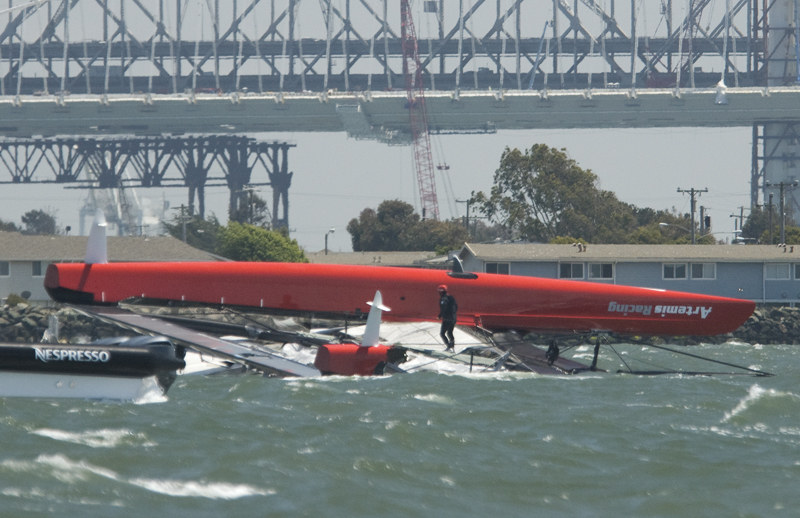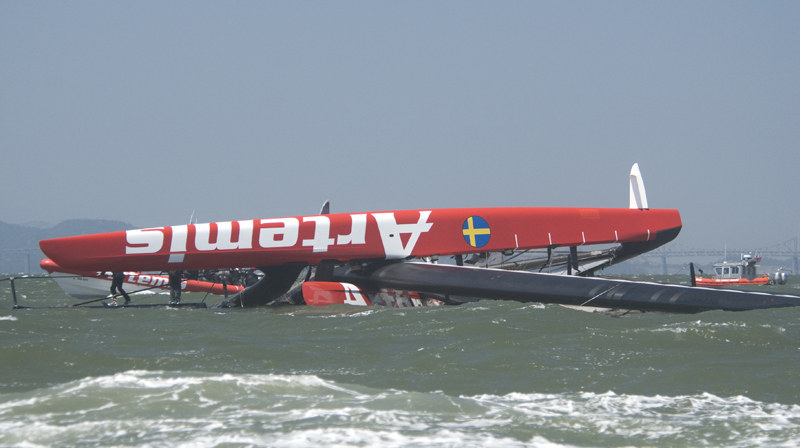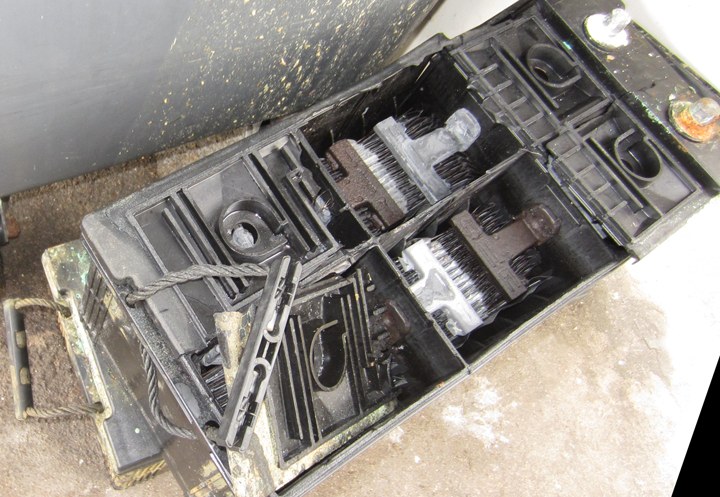
Simpson’s Tragic Death Stuns Sailing Community

Yesterday’s death of two-time Olympian Andrew ‘Bart’ Simpson stunned America’s Cup enthusiasts both here in the Bay Area and around the world. As has been widely reported, the 36-year-old British sailor was pinned beneath the wreckage of a capsized Artemis Racing AC72 catamaran, where he apparently drowned.

The tragedy occurred at roughly 1 p.m. yesterday while the team was performing routine practice maneuvers in the Central Bay. It’s important to note that this was the team’s first boat, which was not designed with the revolutionary hydrofoils that have been dominating AC news lately.
Immediately after the capsize, VHF channel 16 radio transmissions announced that one crewman was unaccounted for. By the time Simpson was discovered beneath the wreckage and pulled free, roughly 10 minutes had passed. Once retrieved, the lifeless crewman was rushed ashore, where paramedics administered CPR to him on the St. Francis YC docks. Despite their best efforts, however, they could not revive him.
Although Artemis Racing has not yet released an official statement on the sequence of events involved in the cat’s catastrophic breakup, conjecture among some analysts is that the boat suffered structural failures which caused it to capsize, rather than the opposite — a capsize causing the boat to break up — as was originally assumed by many casual observers.

In a Wired Magazine online report this morning, Adam Fisher writes, "The problem was with the boat itself, either faulty engineering or faulty construction. The boat simply broke apart under sail, folded, then flipped." Although Fisher does not acknowledge his sources for these statements, photo analysis of the wreckage seems to support this theory. Undoubtedly, Artemis will eventually release a comprehensive assessment of the sequence of events, but for now the team is understandably focused on grieving for the loss of their fallen crewman.
Simpson, who is survived by his wife Leah and two young sons, was one of the shining stars of the Artemis team, having won a silver medal in the Star class at last year’s Olympics in London with Artemis’s Director of Sailing, Iain Percy. The pair took gold in the Star class in 2008 at Beijing.

While some mainstream media outlets seem eager to claim these boats — and/or racing at these speeds — is inherently dangerous, we would point out that all competing teams have undergone extensive safety training for high-speed racing in San Francisco Bay conditions, the boats are shadowed closely by chase boats whenever they sail, and all crewmen wear both helmets and lifejackets. If only Simpson had been thrown clear of the wreckage, as were his boatmates, he would still be with us today. Structural issues aside, he was tragically unlucky to have somehow ended up beneath the nets.
The entire Latitude staff joins Team Artemis in mourning the loss of this brilliant young athlete. Our hearts go out to his family and friends.
Exploding Lead-Acid Batteries

©2013 Latitude 38 Media, LLC
Lead acid batteries are used as starting and house batteries on many boats — and cars — and usually they work very well. However, on rare occasions they explode when being charged. And they can explode with such force that they blow the top right off the battery case. Sometimes such explosions can result in fires, and fires are never good on a boat.
Hydrogen and oxygen gases, both of which are highly flammable and explosive, are produced when batteries are charged. Many lead acid explosions are believed to occur when the electrolyte level gets below the level of the plates, which would allow for hydrogen/oxygen to accumulate. When the battery is engaged, it may create a spark that ignites the accumulated gases.
Two things that can be done to reduce the chance of a lead acid battery explosion are: 1) make sure there is plenty of ventilation around the battery to keep hydrogen and oxygen from accumulating, and 2) make sure the electrolyte is kept at the proper level.
Ever had a problem with an exploding lead-acid battery? If so, we’d like to hear about it.
Doo Dah Party Tonight
If you’re planning a trip up to the Delta this summer — on your own or with your yacht club — be sure to register for the Delta Doo Dah DIY. It’s free, date-flexible, and allows you to take advantage of great discounts along the way.
Then be sure to drop by Berkeley YC tonight from 5:30-8:30 for the Doo Dah Kick-Off Party, where you can meet other Doo Dah’ers and hear a couple of awesome speakers. Anyone is welcome but only registered Doo Dah’ers are eligible for prizes. So what are you waiting for? Go HERE to sign up!
